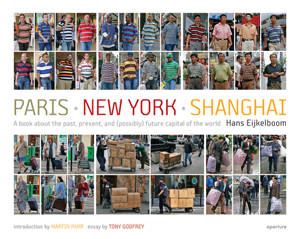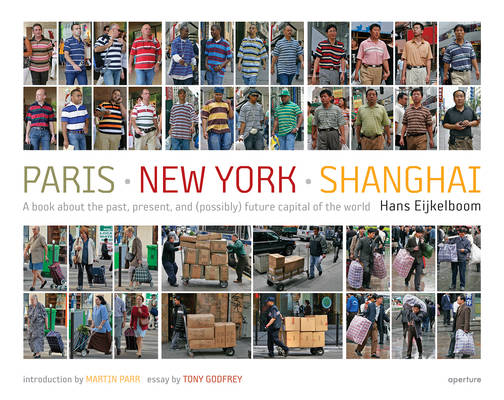
- Afhalen na 1 uur in een winkel met voorraad
- Gratis thuislevering in België vanaf € 30
- Ruim aanbod met 7 miljoen producten
- Afhalen na 1 uur in een winkel met voorraad
- Gratis thuislevering in België vanaf € 30
- Ruim aanbod met 7 miljoen producten
Zoeken
Hans Eijkelboom: Paris-New York-Shanghai
A book about the past, present, and (possibly) future capital of the world
Hans Eijkelboom, Martin Parr, Tony Godfrey
Hardcover | Engels
€ 48,95
+ 97 punten
Omschrijving
Dutch conceptual artist Hans Eijkelboom's work is very much in line with the deadpan, seemingly mechanistic note-taking of Ed Ruscha and Hans-Peter Feldman. In "Paris-New York-Shanghai," Eijkelboom creates a witty comparative study of three major contemporary metropolises, each selected for having been the cultural capital of its time--Paris during the nineteenth century; New York, the twentieth; and Shanghai, the twenty-first.
This uniquely bound three-volume accordion-folded set opens up to allow the reader not only to view each city individually, but also to compare simultaneously the three photographic studies of each metropolis and its citizens. The large-format cityscapes with the identifying quirks of each city and the snapshot-style grids of their inhabitants soon reveal how similar one city is to another today. For example, Eijkelboom's grids of mothers carrying their infants in Baby Bjorns, or men wearing striped polo shirts highlight the ubiquity of many of our most intimate possessions. As Eijkelboom writes, "Globalization, combined with the desire of cities for visually spectacular elements, is leading to the appearance everywhere of city centers that look the same and where identical products are sold." With an introduction by Martin Parr.
This uniquely bound three-volume accordion-folded set opens up to allow the reader not only to view each city individually, but also to compare simultaneously the three photographic studies of each metropolis and its citizens. The large-format cityscapes with the identifying quirks of each city and the snapshot-style grids of their inhabitants soon reveal how similar one city is to another today. For example, Eijkelboom's grids of mothers carrying their infants in Baby Bjorns, or men wearing striped polo shirts highlight the ubiquity of many of our most intimate possessions. As Eijkelboom writes, "Globalization, combined with the desire of cities for visually spectacular elements, is leading to the appearance everywhere of city centers that look the same and where identical products are sold." With an introduction by Martin Parr.
Specificaties
Betrokkenen
- Auteur(s):
- Uitgeverij:
Inhoud
- Aantal bladzijden:
- 240
- Taal:
- Engels
Eigenschappen
- Productcode (EAN):
- 9781597110440
- Verschijningsdatum:
- 1/11/2007
- Uitvoering:
- Hardcover
- Formaat:
- Genaaid
- Afmetingen:
- 267 mm x 213 mm
- Gewicht:
- 1746 g

Alleen bij Standaard Boekhandel
+ 97 punten op je klantenkaart van Standaard Boekhandel
Beoordelingen
We publiceren alleen reviews die voldoen aan de voorwaarden voor reviews. Bekijk onze voorwaarden voor reviews.











